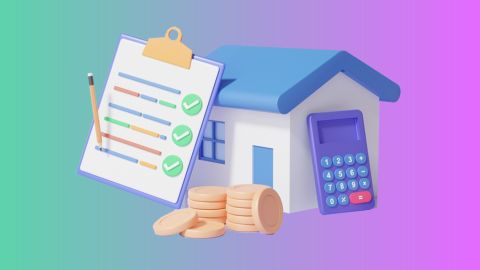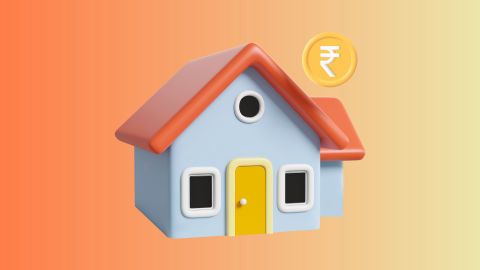Navigating the world of loans can be daunting, especially when you are trying to figure out how much you can afford to borrow. This is where a mortgage affordability calculator comes in handy. A mortgage affordability calculator is a powerful tool that helps you determine how much mortgage you can afford based on your income, expenses, and other financial commitments. This article will delve into the details of mortgage affordability calculators, how to use them, and the factors that affect mortgage affordability.
Introduction to mortgage affordability calculator
What is a mortgage affordability calculator?
Mortgage affordability is essentially your ability to manage the monthly repayments on a mortgage without stretching your finances too thin. It is crucial to know your mortgage affordability to avoid financial stress in the future. A mortgage affordability calculator considers various factors such as your income, expenses, interest rates, and loan tenure to give you an estimate of the mortgage amount you can comfortably afford.
How to use the mortgage affordability calculator?
Enter your income: Input your monthly income, including any additional sources of income.
Input expenses: Enter your monthly expenses, including utilities, groceries, and other regular payments.
Specify loan details: Provide details such as the loan tenure and expected interest rate.
Calculate: Click the calculate button to get an estimate of your mortgage affordability.
How to calculate mortgage affordability?
An affordability calculator helps you estimate your housing budget based on various factors. You can customize payment details and receive helpful suggestions for each input field. The calculation can be based on your annual income, monthly debts, and down payment, or on your estimated monthly payments and down payment amount. Advanced filters in the calculator allow for a more accurate affordability estimate by considering property taxes, homeowner's insurance, and HOA dues (if applicable). Here's a breakdown of the key factors:
Annual income: This is your total yearly income before taxes and other deductions. If you have a co-borrower contributing to the mortgage, combine both incomes to calculate your annual income.
Total monthly debts: These are recurring expenses such as car payments, minimum credit card payments, or student loans. For example, if you pay Rs. 250 for a car and Rs. 50 for credit cards each month, your total monthly debt is Rs. 300.
Down payment: The upfront amount paid to purchase a home. Most home loans require at least 3% as a down payment. A 20% down payment is ideal for lowering monthly payments, avoiding private mortgage insurance (PMI), and increasing affordability. For instance, a 3% down payment on a Rs. 2,50,000 home is Rs. 7,500, while a 20% down payment is Rs. 50,000.
Interest rate: This is the annual percentage a lender charges for the loan. Interest rates can vary based on factors like credit score and down payment size. Calculators often use the current average rate, but you should adjust it to reflect your situation.
Loan term: The duration of your loan, typically 30 years (or 360 months), affects monthly payments. You can customize the loan term in months to fit your financial plan.
Property tax: Property taxes are based on the assessed value of the home and vary by location. While calculators include default property tax rates, you can update this figure for a more precise estimate.
Factors affecting mortgage affordability:
Several factors influence your mortgage affordability, including:
Income: Your total monthly income is a primary determinant of how much a mortgage you can afford.
Expenses: Regular monthly expenses can significantly impact your mortgage affordability.
Interest rates: Higher interest rates increase the cost of borrowing, reducing the amount you can afford.
Loan tenure: The length of your loan term affects your monthly repayment amounts and overall affordability.
Existing debts: Current debts and financial obligations can limit your borrowing capacity.
Step-by-step guide to calculate mortgage affordability:
- Determine annual income: Combine your total yearly income before taxes and deductions, including contributions from any co-borrower.
- Calculate monthly debts: List all recurring monthly expenses like car payments, student loans, and credit card minimums.
- Estimate down payment: Decide how much you can pay upfront. A higher down payment (20% or more) reduces monthly payments and avoids private mortgage insurance (PMI).
- Consider Debt-to-Income Ratio (DTI): Divide your total monthly debts by your gross monthly income. Aim for a DTI of 36% or lower.
- Factor in interest rate: Use current average rates or rates based on your credit score to estimate monthly payments.
- Adjust for loan term: Decide on the loan length, typically 15-30 years, which impacts monthly costs.
- Include additional costs: Add property taxes, homeowner’s insurance, and potential HOA dues for a realistic budget.
Understanding your mortgage affordability results
Once you have your results, it is important to understand what they mean. The mortgage affordability calculator will provide you with an estimate of the loan amount you can afford based on the inputs you provided. This amount is the maximum mortgage that you can take without overburdening your finances. It is advisable to consider a loan amount slightly lower than the maximum to ensure a comfortable repayment schedule.
When you are ready to apply for a loan, consider Bajaj Finserv Loan Against Property as it offers competitive interest rates and flexible repayment options, making it a great choice for those looking to leverage their property for financial needs. You can check the loan against property features and loan against property interest rate before applying for a loan against property.
When you are ready to apply for a loan, consider Bajaj Finserv Loan Against Property as it offers competitive interest rates and flexible repayment options, making it a great choice for those looking to leverage their property for financial needs. You can check the features and fees and charges before applying for a loan against property.
A mortgage affordability calculator is an invaluable tool for anyone looking to buy a home. It helps you plan your finances effectively by giving you a clear picture of how much you can afford to borrow. By understanding and using this calculator, you can make informed decisions and avoid financial pitfalls. Knowing your mortgage affordability is the first step towards securing your dream. For more details on loans and financial planning, visit the Bajaj Finserv Loan Against Property.
In conclusion, leverage the power of a mortgage affordability calculator to take control of your financial future. With tools like these and the right loan products from Bajaj Finance, you can confidently navigate the buying process.




